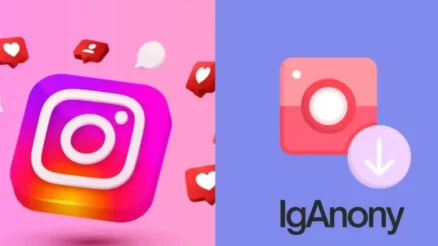Have you ever wondered just how many different serif fonts exist? It’s a question that can puzzle even seasoned designers and typography enthusiasts. If you’ve found yourself pondering, “How many serif fonts are out there, and where do I even begin to explore them?”, you’re not alone. In this article, we’ll unravel the diverse world of serif fonts in a way that’s straightforward to grasp. By the end, you’ll have a clearer understanding of the range and variety of serif typefaces available today. Let’s dive into the fascinating realm of serif fonts together.
Definition and Basics of Serif Fonts
Definition:
Serif fonts are typefaces characterized by small lines or strokes (serifs) attached to the end of letters or symbols. These serifs can be short, long, thin, or thick, and they often project from the main stroke of the character. Serif fonts are known for their traditional appearance and are widely used in print media for their readability and classic feel.
History:
Serif fonts have roots dating back to ancient Rome, where inscriptions carved into stone featured serifs to aid in readability and visual appeal. Over centuries, serif typefaces evolved through different artistic and technological eras, adapting to various design trends and printing methods. Today, serif fonts continue to be valued for their elegance and historical significance in typography.
Classification of Serif Fonts
Serif fonts are categorized into several main types, each with distinct characteristics that define their appearance and historical evolution:
Old Style Serifs:
Old-style serif fonts originated during the Renaissance and are characterized by diagonal stress in the strokes, moderate contrast between thick and thin lines, and slanted serifs. These fonts aim to mimic the handwriting of scribes during the early printing era, making them legible and pleasing to read in long paragraphs.
Transitional Serifs:
Transitional serif fonts emerged in the 18th century as a bridge between old style and modern serif fonts. They feature sharper serifs, more vertical stress in the strokes, and increased contrast between thick and thin lines. Transitional serif fonts are known for their clarity and readability, making them popular for both text and display purposes.
Modern Serifs
Modern serif fonts, developed in the late 18th century, exhibit extreme contrast between thick and thin strokes, vertical stress, and hairline serifs. These fonts reflect the influence of the Industrial Revolution and aim for a more dramatic, elegant appearance. Modern serif fonts are often used in high-end publications and for decorative purposes.
Slab Serifs
Slab serif fonts, also known as Egyptian or square serif fonts, feature thick, block-like serifs that are uniform in width with strokes. These fonts have minimal or no bracketing (the gradual transition from the serif to the stroke), giving them a bold and sturdy appearance. Slab serif fonts are popular for headlines, signage, and branding due to their strong and impactful presence.
Popular Examples of Serif Fonts
Serif fonts have several iconic examples that illustrate their diverse characteristics and historical significance:
Times New Roman
Known for its traditional and readable design, Times New Roman features moderate stroke contrast and distinctive serif shapes. It was commissioned by the British newspaper “The Times” in 1931 and became widely used in the printing industry. Times New Roman remains a popular choice for academic papers, books, and formal documents due to its timeless appearance and legibility.
Georgia:
Designed in 1993 by Matthew Carter, Georgia is a contemporary serif font optimized for on-screen readability. It features sturdy serifs, moderate stroke contrast, and open letterforms, making it ideal for digital content and web typography. Georgia is commonly used in online articles, e-books, and user interfaces where clarity and legibility are paramount.
Baskerville:
Created by John Baskerville in the 18th century, Baskerville is renowned for its refined appearance and high contrast between thick and thin strokes. It is characterized by crisp serifs, vertical stress in the letterforms, and elegant proportions. Baskerville’s cultural impact includes its association with classic literature and its influence on subsequent typeface designs aimed at enhancing readability and aesthetic appeal.
Garamond:
Named after the French engraver Claude Garamond, this serif font dates back to the 16th century. Garamond fonts are known for their graceful proportions, low-stroke contrast, and delicate serifs. They are highly regarded for their readability and have been extensively used in book publishing and printing. Garamond’s enduring popularity lies in its timeless elegance and suitability for long passages of text.
Number of Serif Fonts and Variations
Estimation
Pinpointing the exact number of serif fonts available today is challenging due to the vast and continuously evolving nature of typography. However, thousands of serif fonts exist across various digital and print platforms, each offering unique design elements and characteristics to suit different purposes and preferences.
Variations
Serif fonts encompass a wide spectrum of stylistic variations within each category. For example:
Old Style Serifs
Range from the rustic, organic forms of early serif designs to more refined adaptations that maintain historical charm.
Transitional Serifs
Offer variations in stroke contrast, serif shape, and overall proportions, catering to both traditional and modern aesthetics.
Modern Serifs:
Showcase dramatic contrasts, thin hairline serifs, and vertical stress variations, influencing their use in high-impact design contexts.
Slab Serifs:
They span from traditional, heavy slab designs to more contemporary interpretations with subtle serif details or geometric influences.
Use Cases for Serif Fonts
Serif fonts find extensive use across different design contexts, each leveraging their unique characteristics for effective communication:
Print Media
Serif fonts are favored in print media such as books, newspapers, and magazines due to their readability. The serifs guide the eye along the text, improving legibility and reducing eye strain during prolonged reading. Their traditional appearance also lends a sense of authority and timelessness, making them suitable for conveying detailed information and narratives.
Formal Documents:
In formal documents like resumes, business reports, and legal papers, serif fonts play a crucial role in enhancing readability and professionalism. Their clear letterforms and balanced proportions contribute to a polished and authoritative presentation. Serif fonts help maintain visual consistency and convey a sense of trustworthiness, making them ideal for documents that require clarity and precision.
Web Design:
Despite the digital shift towards sans serif fonts for online readability, serif fonts still have a place in web typography. They can add a touch of sophistication and elegance to websites, especially for content that aims to evoke a sense of tradition or reliability. Serif fonts are often used in headings, pull quotes, and call-to-action buttons to create a visual hierarchy and draw attention to important information.
Considerations When Choosing a Serif Font
When selecting a serif font for your design project, consider these key factors to ensure it meets your specific needs:
Purpose:
Choose a serif font that aligns with the project’s objectives and target audience. Consider whether you need a classic and formal style for a traditional publication or a contemporary and clean design for a modern brand identity.
Readability
Prioritize readability and legibility, especially for longer texts or smaller font sizes. Ensure the serif font you select has clear letterforms and adequate spacing between characters to enhance comprehension and ease of reading.
Brand Identity
Serif fonts can significantly influence brand perception and identity. Select a font that resonates with your brand’s personality and values. Serif fonts with historical associations may evoke trust and authority, while modern interpretations can convey innovation and sophistication.
Conclusion
Serif fonts offer a vast array of choices for designers, spanning from traditional to modern styles. While pinpointing an exact number is challenging due to ongoing developments, their diversity ensures suitability for various design needs. From enhancing readability in print media to conveying professionalism in formal documents and adding sophistication to web design, serif fonts remain essential tools in visual communication. Embrace their versatility to create impactful designs that resonate with your audience and reflect your brand’s identity effectively.





